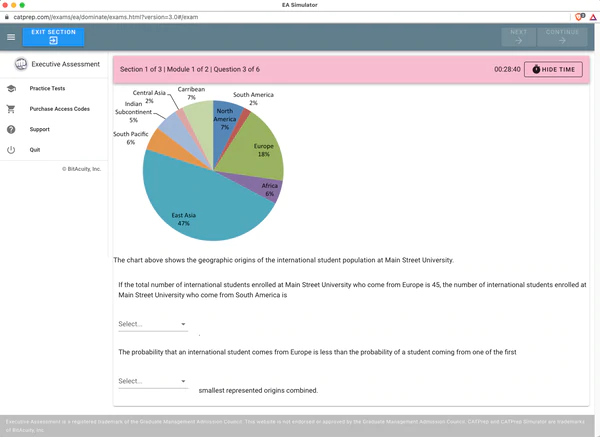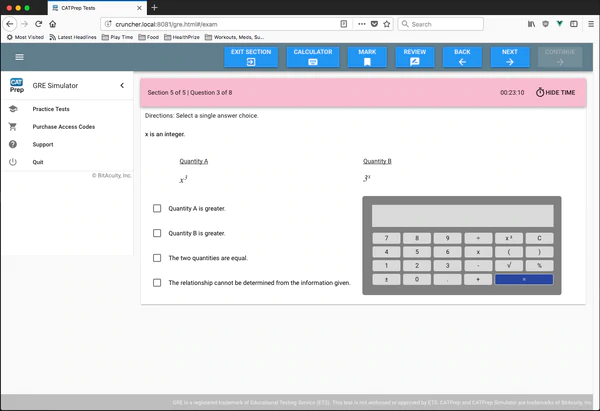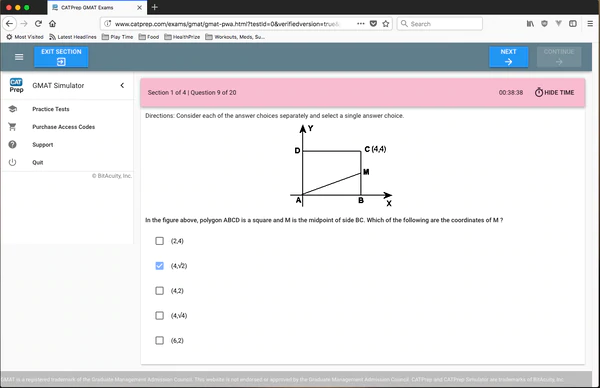The Long-Term Benefits Of A High CAT Score
CAT (Computer Adaptive Testing) has taken its place as the leading, most cost- and time-effective way to assess the potential of applicants to college, the military and business. It is superior to traditional testing because its personalized, adaptive design yields much more accurate results.A range of entrance qualification tests-from the GRE to the GMAT-use this technology today, and it is a mainstay of the college admissions process. More and more businesses today are creating customized CATs for placement and career track purposes, while educational institutions are expanding their use beyond admissions to placement, grading and other purposes.
There are both current and future benefits that result from a high CAT score, in addition to the many benefits that the test-giving institutions and organizations reap. Adaptive tests are known for their accurate, uniform scoring, and well-designed and updated CAT tests can be interpreted in more ways than most test-takers realize.
Test-taker benefits, present tense
Since CATs can take as little as 50% of the time of traditional testing, with equivalent or greater precision, the first practical benefit to the test-taker is that it saves real, otherwise-usable time. Most test-takers prepare for CATs, too, and learn not to waste time on any items that are too difficult or, conversely, too easy. The immediate benefit, of course, is a higher score. Beyond this, however, test-takers gain an important insight in to how CAT tests-the type they may take again during their academic and professional lives-are administered and graded.
Benefits to the test-givers are also transferable to the test-takers in both direct and indirect ways. That is, test-giving organizations and businesses realize an economic benefit from time savings, since the quantity and cost of testers' "seat time" is greatly reduced. Combined with the fact that a well-prepared test-taker is familiar with the test design, this economic benefit results in a reduction of stress for the test-taker. The benefits to both test-givers and -takers are therefore numerous, from practical, pragmatic ones such as efficiency and longevity of results, to long-term psychological and emotional benefits.
As compared to the traditional testing, CAT technology is far more efficient as it is able to assess candidates in lesser time, by asking them less number of questions. The questions that do not contribute or provide no help in determining the person's score to the assessment are never asked.
Test-taker benefits, future tense
One of the major benefits of the CAT technology is that it provides more accurate results, with candidates being graded not simply on the number of "right" answers, but on the relative difficulty levels of the various questions. This offers test-takers a much more realistic view of their capacities and abilities, enabling them to have a more realistic view of challenges that they will face in school or the workplace. This is of immense, long-term benefit in professional careers, as older test designs allowed for the evolution of students that "tested well," regardless of their overall grasp of a subject. The CAT testing paradigm produces a more reliable measure of aptitude, and is not as susceptible to "gaming" like traditional tests. A high CAT score, representing success in a dynamic and personalized testing environment, says a lot more about someone than any variant of a static "20 questions" exam.
The benefits of this cannot be overstated. College graduates who expected career success because they were good (traditional style) test-takers can now enter the workplace with a realistic assessment of their abilities to perform in a particular specialty or environment. No longer will young professionals assume that the workplace is a series of multiple-choice interrogatories or competitions. Armed with a real-world view of their own abilities, they will be more likely to succeed.
Down the road
There are more practical benefits to go along with the psychological ones. A high CAT score has a much longer "shelf life" than the results of other, more topical and time-sensitive tests. Should a person wish to change careers, go back to school or enter a special training program of some kind, the CAT score is ready to confirm their suitability for such an endeavor. A high CAT score will not go stale.
Even if one is confronted with the need to take another CAT in the future, the previous experience will redound to their benefit, as they will be familiar with the process and not experience score-reducing stress and strain. The long-term benefits of a high CAT score are many, obviously, and are both practical and psychological. Perhaps the psychological benefits are the most pronounced, as follow-up studies have shown that high CAT scorers are more confident, flexible, trainable and self-aware than low scorers.
The benefits of a high CAT score even begin before the test is taken, as most people put at least some time into preparing for a CAT. The preparation process itself is the first step on the road to subject mastery, something that a high CAT score merely corroborates and does not create out of thin air. This is in marked contrast to the possibility that traditional tests can be "aced" by strategies and tactics rather than knowledge and thinking prowess. The CAT is out of the bag now, and a high score will pay dividends for a long time.


